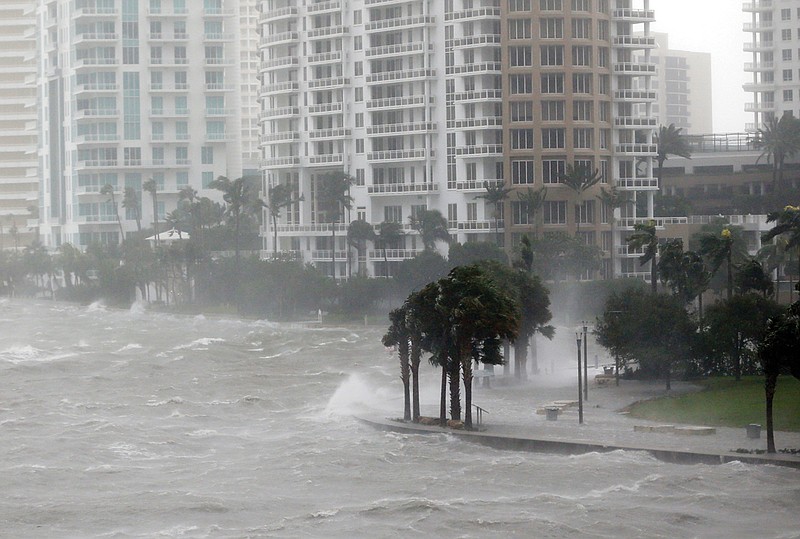WICHITA, Kan.-Ajit Pai has been to Texas and Florida in recent weeks to learn what lessons hurricanes Harvey and Irma have to offer about how to improve the nation's emergency communication systems during natural disasters.
Pai, the chairman of the Federal Communications Commission, said his agency-working with Congress and state and local officials-can turn those lessons into policies that ensure the nation's communications networks and 911 systems remain reliable during disasters.
With Hurricane Irma barreling across Florida, Texas dealing with Harvey's flooding and Maria days from gaining hurricane strength, the Senate unanimously passed legislation last week that will require cellphones to work on other carriers' networks during emergencies. Now Pai is traveling the country touting the benefits of an internet-based New Generation 911 system to local government officials.
"Going forward one of the things we want to do is figure out what are the lessons we can learn from Harvey and Irma and Maria in terms of a way to make our public safety communication system more robust," said Pai, who was in Wichita on Thursday and Friday to see Sedgwick County's Next Generation 911 system and to speak at the Kansas Broadband Conference.
One of his takeaways is ensuring that there is more fiber optic cable in the ground, noting that one of the lessons from the catastrophic flooding that Harvey brought to Houston is that fiber optic cables are impervious to water and have a greater capacity to handle surges in 911 calls, he told The Associated Press.
Hurricane Maria has had a catastrophic impact on Puerto Rico's communication network, with more than 95 percent of its wireless cell sites out of service, Pai said. Getting them back up will be difficult, particularly given power outages across the island.
"To me it just underscores the fact one of the reasons why we want our communications networks to be strong and reliable and ubiquitous is that in times of trouble-whether it be a hurricane or tornado or earthquake or some other emergency-we want to be able to connect people who need help with those who are able to provide it. And that is something the FCC has a major role in," Pai said.
The recent storms spurred the Senate to act on legislation that had been dormant since the House passed it in January. Last week, senators unanimously passed the Secure Access to Networks in Disasters Act, known as the SANDY Act, which would require that cellphones work on other carriers' networks during an emergency. The bill, which will go to President Donald Trump for consideration, would make 911 service more available during disasters.
Its passage was hailed by the National Association of Broadcasters because it also helps local radio and television stations whose broadcasts are knocked down during a disaster. It puts local broadcasters on the same level as water, power and gas companies when it comes to such things as helping hometown stations access backup transmitters when roads are blocked and providing fuel for emergency generators.
"As Hurricanes Harvey and Irma have demonstrated, hometown radio and TV stations play a lifesaving role as 'first informers' during times of emergencies, and this legislation will provide local broadcasters with access to vital resources to stay on the air when disaster strikes," Dennis Wharton, NAB's executive vice president of communications, said in a statement.
Radio and TV broadcasters have been "enormously helpful" during emergencies and the fact this provision is in the legislation "speaks to the fact they have an important role to play," Pai said.
Pai has also been visiting 911 call centers across the nation touting the benefits of the Next Generation 911 system. It is essentially an internet-based system that allows more pathways for routing 911 calls, unlike the old legacy 911 systems which are dependent on decades-old network architecture.
"Next Generation 911, I think, is ultimately where we want the public safety communication system to end up and it is going to be a difficult transition," Pai said. "It is a big expenditure and there are many jurisdictions that have to upgrade that infrastructure. But that I think ultimately will keep people safer, as safe as possible."

